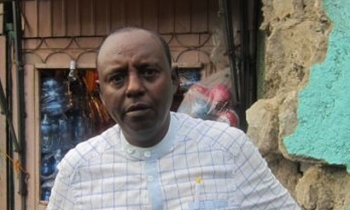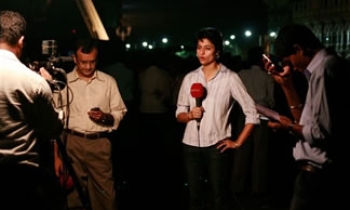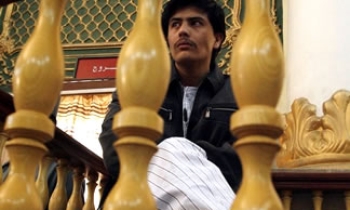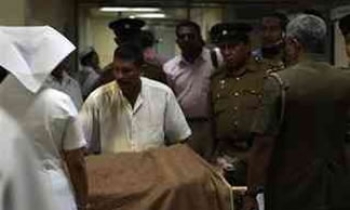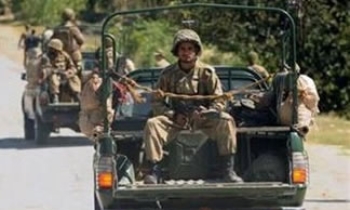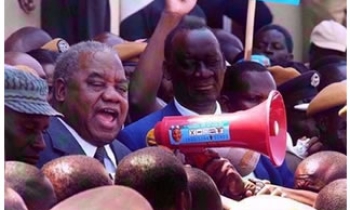NEW YORK The fallout from incorrect reports of the West Virginia mining tragedy continued for newspapers nationwide Wednesday morning with some editors taking some blame for initially reporting the wrong story, and others saying they did everything possible to get the correct information out as they knew it.
As numerous front pages wrongly reported that 12 of the trapped miners in the incident had been found alive, editors scrambled to determine how their papers had fared in the coverage, which began around midnight as reports first surfaced that the miners had been saved. But about three hours later, the story dramatically changed when the truth was learned that the miners had been found dead.
The timing of the first reports, just as many papers on the East Coast were hitting their first deadlines, resulted in many editions carrying the incorrect, positive news. Since the correct version of events was not released until about 3 a.m., many papers were not able to run a correct version until their final editions went out, although most changed it on their Web sites.
Sherry Chisenhall, editor of the Wichita (Kan.) Eagle wrote on her paper's Web site, "If you saw today's printed edition of The Eagle, you saw a front page headline and story that are flat wrong. ...I'll explain why we (and newspapers across the country) went to press last night with the information we had at the time. But it won't excuse the blunt truth that we violated a basic tenet of journalism today in our printed edition: Report what you know and how you know it."
Alan English, executive editor of the Shreveport (La.) Times, posted on the paper's Web site today, "I wish I could call back all of the editions with the mistaken headline, a grim reminder of just how short-lived some joy can be. The timing of the news and the events are unfortunate, and we are sorry for any excessive pain our print editions might add."
The Boston Globe, with a circulation of about 414,000, managed to get the correct story into 145,000 copies of its final edition, according to editor Martin Baron. He had initially said only 50,000 correct copies were distributed. Baron added that the paper actually dumped 30,000 copies with the wrong story and replaced them with 30,000 extra copies offering the corrected version.
Baron told E&P the coverage was as good as could be expected, given the timing of events and the fact that the original reports were coming from rescue workers, government officials, and families of the miners. "It seemed we handled it just fine all along the way," said Baron. "It's not like people were working with no information. There were officials commenting on this. As it turned out, wrong information was given out."
He added that if the paper had held off on the story and it turned out to be true, it would have drawn criticism for waiting too long. "At some point, you've got to print a paper," he said. "I don't know what else you can do."
Mike Days, editor of The Philadelphia Daily News, agreed that newspapers in most cases went with the best information they had. But he said editors must take blame when their stories are wrong, no matter what the reason. "The paper is responsible for everything in the paper and if there is an inaccuracy, in this case a huge one, you have to take responsibility," Days said. "We are in the business of reporting truth, and we can't just ignore it."
Newsroom staffers roused Days from bed at about 3 a.m. after word spread that the miners had died. At that point, the Daily News had already printed about 120,000 copies with an incorrect Associated Press story, with another 30,000 to go. Days said the decision was made to continue printing because a system shutdown for maintenance barred editors from changing the paper's content. He planned to run an editor's note in Thursday's paper explaining, as well as a likely story on how the misinformation was spread.
"We need to run a note that we erred and we regret it," Days said. "We need to get into the whole issue of communication in West Virginia. I don't remember a case like this where [the wrong story] was out there for three hours."
Also awakened in the middle of the night was Leonard Downie Jr., executive editor of The Washington Post, who learned the unfortunate news that the paper's final edition, with word of miners found alive, was wrong. He said about 100,000 copies of the Wednesday edition carried the bogus report. Most readers, however, received an earlier version that reported the search was still on.
Downie defended his reporters' coverage, saying sourcing at the scene indicated the miners had lived. "The mistake was not ours," he asserted.
Several newspapers, such as The Sun of Baltimore and The New York Times, published front-page stories that attributed the bogus report to family members. "We had a qualified story on the front page with skepticism in it," said Sun editor Tim Franklin. "This is what we knew when we went to press." But Franklin admitted the paper needed to explain to readers why the story was wrong when they received it, noting that an article would be run in Thursday's paper to address the issue.
Toby Usnik, a spokesperson for The New York Times Company, responded to questions about the paper's handling of the story with the following statement: "By the time our presses stopped running at 2:47 a.m., our coverage of the mining disaster relied on attributed sources, including a named official from the West Virginia Department of Military Affairs and Public Safety, and victims' family members. We updated our coverage online at approximately 3:25 a.m. once contrary reports were confirmed. At that time, all printed copies of today's Times were circulating.
"We will continue to report on the disaster and its aftermath in order to explain how the actual situation varied from the accounts made by these sources."
At The Miami Herald, the nearby Orange Bowl game was the lead story, with a triple-overtime finish. But that did not stop the paper from running a small teaser on Page One declaring "Miners Alive" in the later editions, which went to at least 60% of home subscribers, according to Executive Editor Tom Fiedler. He said that referred to an AP story that ran on Page 3.
"I don't feel that we need to apologize, but we should explain," said Fiedler. He noted that the paper's first edition, which went to fewer readers, had a correct story reporting that one miner had been found alive and the search was continuing. "That is one of the unfortunate realities of being in a business where you put words on paper, then put them on a truck to be delivered hours later," he said.
Since the Herald's last deadline for changes is about 3:30 a.m., none of the editions had the correct story, Fiedler said. But, he added, the Web site posted the accurate version at about 4 a.m. "Readers recognize that these things happen when they are asleep," the editor added. "I think people understand that we got caught in the time shift."
Fiedler, who said he first found out about the errors when he woke up at about 5 a.m. and checked the news.
An explanatory AP story on Wednesday stated that Gov. Joe Manchin "spoke to The Associated Press from his cell phone shortly after relatives said they had received word the miners were safe. 'The rescue people have been talking to us. They told us they have 12 alive,' Manchin said. He said later he went to the mine site to try to confirm the news when rescuers said there had been miscommunication and not all had survived."
In Cleveland, most readers received newspapers reporting that miners had not been found at all, dead or alive, according to Managing Editor Tom O'Hara. He said the paper's first edition, which went to about 215,000 readers, reported that the search was still on. The later edition, reaching some 140,000 readers, included a Cox Newspapers story that reported the miners had been found alive--under a jubilant banner headline.
"We updated it for the later edition based on what was coming over the wires," O'Hara explained, noting that the AP's first report of the miners being found reached them at 12:15 a.m. with an URGENT notation. He said that wire service's first correction story did not come through until nearly 3 a.m. "All of the wire services were running the same thing and our people had no reason not to believe it was true," he added.
O'Hara said he also found out about the mistaken reporting when he woke up Wednesday morning, adding that the copy he received at home had not reported the wrong news. He said the paper's reader representative, Ted Diadiun, had been getting calls from readers and planned to write a special column for Thursday's paper explaining how the wrong story came about.
At The Oregonian in Portland, Executive Editor Peter Bhatia gave the order by phone to "stop the presses" after being awakened after midnight PST with word that his paper was running a bogus AP story. About 2,500 copies of the paper's 250,000 press run had been shipped before the correct story could be inserted and the presses restarted, he said. Most deliveries were about an hour late.
The Pittsburgh Post-Gazette is among many papers planning a Thursday post-mortem. About half of its copies went out with the "miracle" rescue.
Randy Brandt, editor of the Journal Times in Racine, Wis., wrote on the paper's site: "We go with what we know....In this case, I personally called the headline of The Journal Times shortly before our press start at midnight. I based this call on the statement of the governor of West Virginia that it was 'a miracle,' and an Associated Press report from their reporter on the scene. Should I have hedged? In hindsight, probably yes. But contrary to popular belief, news people are as inclined to hope for the best as anybody else, so we hoped for the best, based on the best information available at the time. As the grandson of a coal miner, I prayed along with everybody else."
Scott Libin, a faculty member at the Poynter Institute, wrote today on its Web site, "This case reminds us of a lesson we learned, at least in part, from Hurricane Katrina: Even when plausibly reliably sources such as officials pass along information, journalists should press for key details....If we believe that when your mama says she loves you, you should check it out, surely what the mayor or police chief or governor says deserves at least some healthy skepticism and verification. I understand how emotion and adrenaline and deadlines affect performance. That does not excuse us from trying to do better."
Joe Strupp (jstrupp@editorandpublisher.com) is a senior editor at E&P.

